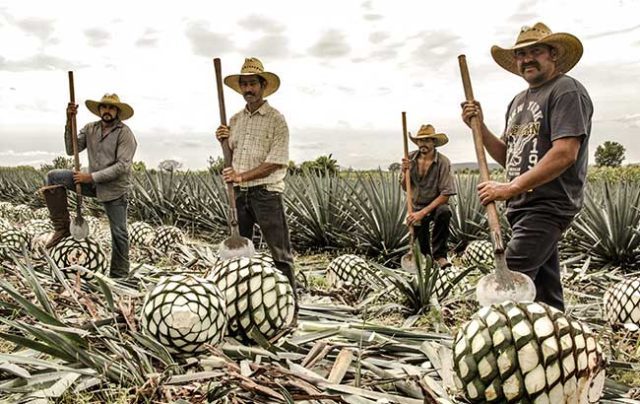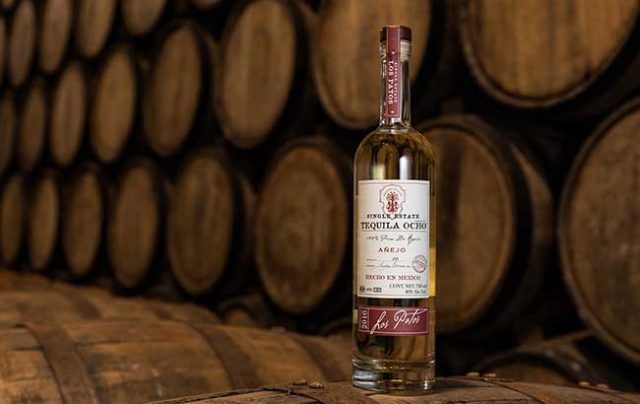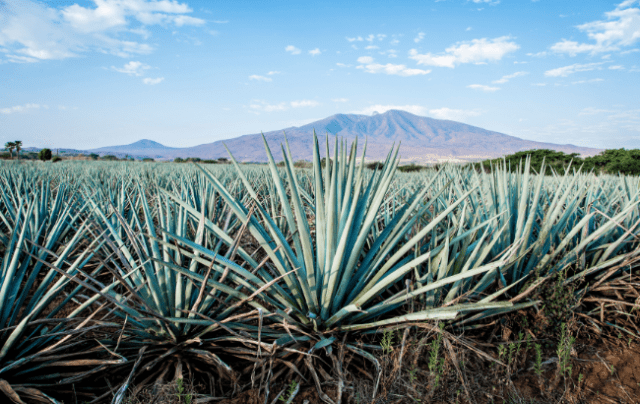Grow figure: the global potential of Tequila
Which countries have producers earmarked to continue the success of Tequila?

*This feature was originally published in the February 2023 edition of The Spirits Business magazine.
Before the Covid‐19 pandemic struck the US in 2020, Jesse Estes, Tequila Ocho’s global brand ambassador, spent some time in Los Angeles.
“I was using a bar as my office,” he recalls. “I would see people come in at different times of the day, ordering Tequila neat or on the rocks, as shots or for sipping, in Margaritas – all kinds of serves.”
What struck him most was the incredible diversity of customers – the spirit seemed to span every demographic going.
“In the US, Tequila is something that everyone drinks,” he says. “It’s almost like wine, it’s that ubiquitous.”
Having sailed past rum in the States, Tequila overtook American whiskey last year to become the country’s second most valuable spirit, only behind vodka, according to IWSR Drinks Market Analysis.
As of 2021, the Distilled Spirits Council of the US put its US sales together with mezcal at 26.8 million cases, with a gross revenue (including Federal excise tax) of US$5.16 billion, just over half of which came from super‐premium sales.
By the end of 2023, IWSR predicts Tequila alone will eclipse vodka by value in the US, something that would have been unthinkable a decade ago.
Estes credits this to the long years of education by brand owners and bartenders.
“That information is now spreading more quickly than ever, and it’s hit this critical mass,” he says. “Enough people have finally understood Tequila and what makes the category so special and unique. And we have to mention the celebrity aspect. The number of celebrity‐owned, or backed, or endorsed Tequila brands in just the past three years is pretty astonishing.”
At times it seems almost a prerequisite of fame in the US to have your own Tequila, and other spirits can only look on with envy as stars of Hollywood and sport pile on down to Mexico.
There is certainly no equivalent stampede into Scotland or Japan, for example.
“It speaks to how hot the category is,” says Mia Simpson Culp, managing director global Tequilas at Brown‐Forman, not that her brands, Herradura and El Jimador, have taken this approach.
A rich story
She adds: “I don’t think you have to have a celebrity to be successful. Casa Herradura has been around for 153 years, and we have a very rich story and a beautiful home.
“Tequila has so many wonderful qualities. It has that sense of provenance and authenticity similar to Bourbon or single malt, and has rich production and makers’ stories. You also have versatility in how it’s consumed. It has all the best qualities of different spirits categories compiled into one.”
From infinitely mixable blancos through to extra añejos and cristalinos for sipping, Tequila appeals to all types of drinkers from other categories.
“Our data shows we’re stealing a lot of share from vodka,” she says.
Another reason for the spirit’s success, cited by Michael Merolli, head of Pernod Ricard’s House of Tequila, is the growing influence of Mexican culture, from movies to gastronomy.
“In the US you can find many high‐end Mexican restaurants,” he says. “It’s not just Tex‐Mex or only taco restaurants.”
Like many, he mentions the country’s love of its number‐one cocktail – the Margarita, which so many Americans learned how to mix at home during lockdown.
“Overall, Tequila is going to continue growing in the US, but probably at a slightly slower pace because it cannot grow like that forever,” he says.
In the six months to the end of last October, Brown‐Forman reported net organic sales of Herradura were up by 9% globally, and by 18% for its stablemate, El Jimador.
This was slower growth than the annual figures to 30 April, which saw Herradura jump by 27%, and El Jimador by 28%, not that Simpson Culp sounds concerned.
“Tequila is not growing as fast as it was maybe a year ago,” she concedes, “but it’s still the fastest‐growing spirit category in the US.”
Part of the slowdown can be blamed on the supply chain, particularly when it comes sourcing glass in Mexico, which has affected many brands. But “we believe we are through the worst of that”, she says.

Estes, referring to Tequila’s principle raw ingredient, says: “The supply side is where it gets complicated. Whereas mezcal can use virtually any variety of agave with a high enough sugar content, we are limited to just Blue agave.”
Given the seven‐ to eight‐year wait between planting and harvesting the plant, the industry is inherently cyclical. Just over a decade ago, there was a huge surplus, and agave prices collapsed, but over the past five years they have remained on the high side, pushing 30 Mexican pesos (US$1.60) a kilo.
With just over five kilos needed to make 750ml of 100% agave Tequila, that equates to about US$8.50 a bottle at present.
Category premiumisation
Of course, producers would prefer to pay less, but the high price is all part of premiumising the category, and as everyone will tell you – it’s super‐premium‐and‐above Tequila that has been driving growth in the US.
This has proved a remarkably resilient trend, despite the squeeze on disposable incomes, though the Wall Street Journal claims this may be changing.
On 29 December it quoted analysis of Nielsen retail sales data for 2022, which put the growth of ‘ultra-premium spirits’, including Tequila priced at more than US$50, at just 2% compared with 24% in 2021.
So far, the Tequila boom has been an American story, with this one market responsible for 67% of global volume, going by IWSR figures for 2021, and even more by value, according to Merolli.
Mexico accounts for 20% of volume but is eclipsed by California alone, claims Estes, and for many this represents an opportunity.
“The good news is there’s lots of runway to further develop Tequila in the US outside California,” says Simpson Culp.
When you turn to the rest of the world, it is a different picture.
IWSR puts the UK third among the spirit’s importers after Canada, while according to the UK’s Wine and Spirit Trade Association, sales hit 309,523 cases in the year to 10 September.
This is tiny compared with vodka: the country’s topselling spirit sold 10.1m cases in the same period. Maybe there just isn’t the supply, given America’s insatiable thirst for Tequila, which IWSR predicts will grow by a 9% compound annual growth rate to 2026.
Estes reckons this could be part of the reason, but not Merolli. “This is not something that has been limiting our expansion,” he says. “It’s taking time, but we’re confident it will happen in the UK.”

Premium credentials
Chris Seale is managing director of the UK’s Speciality Brands, whose portfolio has included Tapatio and Don Furlano Tequila since 2009.
He says: “If you go back 10 years, Tequila was seen as a niche, bartender‐ and party‐led product. Now, it’s got much more premium credentials.
“Tequila is the darling of the spirits category post‐pandemic.”
Another factor has been what he calls: “The very buoyant Mexican‐dining sector, whose style tends to be more laidback and casual, and that suited post‐pandemic trends. People have also enjoyed experimenting within the category from blancos to reposados, through to super‐añejos because the growth at the top end of the market has been huge. We’ve probably sold more super‐premium Tequila, like Tapatio Excelencia and Don Furlano Imperial, in the past two years than the previous five.”
Yet Seale adds: “Tequila will always be niche by its nature. The reason for that is that it’s got a very particular taste profile, which simply isn’t appealing to all.”
That is not something you would hear in California, which tells you about the perceptions in the US.
“It’s always felt that Europe may be 10 years behind on Tequila, and probably more than that in terms of actual sales values,” says Estes. “The UK is probably less so – maybe five years behind the US, and maybe catching up more quickly. It has been quite a misunderstood spirit in Europe, probably for the past several decades.”
Simpson Culp says: “At Brown‐Forman we’re optimistic about the international opportunities for Tequila. We’re confident of our position in ‘premium’ and ‘superpremium’, with El Jimador and Herradura.”
Among other markets “that are growing really nicely”, she mentions Australia and Colombia – the latter ranked fourth in the spirit’s export charts by IWSR.
Merolli adds: “Mexico has been growing over the last few years, and the cristalino trend has been really helping this growth.”
However, IWSR is predicting Mexican sales will contract by 3% year on year through to 2026.
For its developing markets, Pernod’s House of Tequila has its mixto brand Olmeca, which is not sold in the US, while relatively developed markets such as the UK have access to the full range, including Olmeca Altos and Avión, both 100%‐agave brands.
These have now been joined by ultra-premium Código 1530, in which the company acquired a majority stake in October. This is all part of Pernod’s ambition to expand its share of premium Tequila, and give Diageo’s Don Julio and Casamigos, and Bacardi’s Patrón a run for their money in this most exciting and dynamic of categories.
Related news
Cocktail stories: Speed Bump, Byrdi
